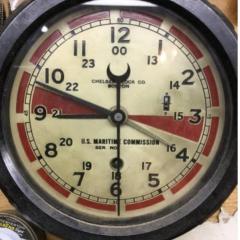SW200-1 Stem position for removal and reinstall?
-
Recently Browsing
- No registered users viewing this page.
-
Topics
-
Posts
-
By watchweasol · Posted
Hi @Michael20 I am no furniture man my self but it’s just bits and pieces I have picked up over the years. It just takes patience when dealing with things like the cases but most are veneered plain wood. When they get damp and open up that is a problem -
By Neverenoughwatches · Posted
I often get an amp drop after i oil the stones with 9415, not sure what difference can be achieved with oiling the teeth. I guess the oiling surface is very small on a tooth as opposed to on the stones a larger drop might have more drag as the teeth plow through it. I oil with a bristle from a brush now, strangely enough the last movement i oiled five escape teeth and the amp was much higher than i usually get , coincidence ? -
By Neverenoughwatches · Posted
Who'd have thought to look at the supposed compatible calibres ? 🤔 Frank did 😅 -
By HectorLooi · Posted
I recently helped my mentor to service 7 Seikos and he told me not to lubricate the pallets. His reason was from his experience from the advanced classes that he conducted, his students all ended up with worse amplitudes after oiling the pallets. I have to admit that I had the same problem when I oiled the exit jewel, like so many videos on YouTube show. I actually ended up with worse amplitude. But now I oil the escapement by oiling the teeth of the escape wheel. I think Rolex used to train their technicians this way. I find that I get about 20° -40° increase in amplitude oiling the escapement this way. I've only started playing with epilame recently. I got a bottle from a Chinese seller on AliExpress. It's supposed to be Episurf Neo but everything on the bottle is in Chinese. When the bottle arrived, half of it had evaporated or leaked. And when I brushed on a thin layer on a mirror, it dries rather slowly and even feels a bit tacky. When I did the oil spread test, like my experience with stearic acid, the treated and untreated surface of the mirror yielded similar results. The contact angle of the oil drop looked about the same for both the treated and untreated surface. When I epilamed an actual pallet fork, the escapement was so sluggish that I couldn't even get 180° amplitude. I dunno if I got conned by the seller but the results are just not convincing. -
By Neverenoughwatches · Posted
I usually just use 2 pair of pliers to remove the roller ( just kidding 🤔 ) I want one,I have an adjustable free standing one. But i really like the little bradux tool that nips under the roller with two tapered jaws that lift it off. You can get under a scope with it to see in detail how the job is going. There is some technique involved to stop you chopping the staff, doesn't particularly matter if the staff is already broken but it naffs up the tool's jaws if you crunch the staff, and the jaws need to be in good shape to prevent damaging the roller. But well worth a try if you've never used one and you can find one that hasn't been misused or buy a one new. The trick is to keep one of your fingers between the two arms to soften the squeeze, with a little practice its a handy little to. I will now prepare myself for an onslaught of negative feedback on it 🤣
-








Recommended Posts
Join the conversation
You can post now and register later. If you have an account, sign in now to post with your account.
Note: Your post will require moderator approval before it will be visible.